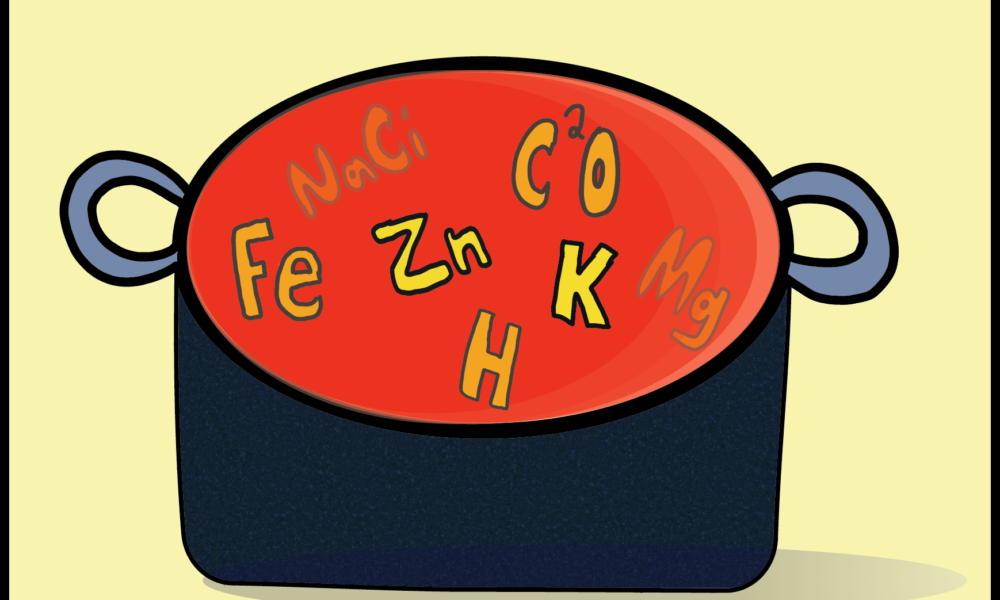McGill’s Faculty of Science organized the 36th edition of Soup and Science from Sept. 25 to 29 in the Redpath Museum. The event offered the McGill community and beyond the opportunity to discover research from multiple fields, such as geography, physics, and computer science, in a relaxed and interactive environment. In total, it featured 25 insightful research presentations from distinguished professors and students. The Tribune compiled an overview of three talks by cell biology experts Dieter P. Reinhardt, Shuaiqi Guo, and Neha Dinesh.
Extracellular fibre systems in health and disease
Dieter P. Reinhardt, professor in McGill’s Department of Anatomy and Cell Biology and Canada Research Chair in Cell-Matrix Biology, began by discussing the role of the extracellular matrix—the materials surrounding cells—in organs and tissues such as the aorta.
“It is extremely important that [the aorta] is elastic. After every pump of the heart, the blood goes into the aorta, which expands and recoils. So, the elasticity is critical for [its] function,” Reinhardt explained.
Reinhardt’s research focuses on fibrillin-1, an extracellular protein contributing to the aorta’s elasticity. Fibrillin-1 binds to other proteins to form threadlike filaments called microfibrils, which then form elastic fibres that allow the skin, ligaments, and blood vessels to stretch.
“There are a number of known [fibrillin-1] mutations that lead to genetic disorders like Marfan syndrome, stiff skin syndrome, and many others,” Reinhardt said.
Reinhardt’s research aims to further the understanding of fibrillin-1’s role in various pathological pathways and treatments of disorders, such as acromicric dysplasia and Weill-Marchesani syndrome.
What makes bacteria stick?
Shortages of antimicrobials—medicines used to treat infections caused by bacteria, viruses, protozoans, and fungi—are worsening worldwide, lowering access to effective therapies for life-threatening infections.
Shuaiqi Guo, assistant professor in McGill’s Department of Anatomy and Cell Biology, proposed a novel anti-adhesion therapy—an alternative in the prevention and treatment of bacterial infections. Such therapy is meant to reduce the contact between bacterial pathogens and host cells by inhibiting the pathogen’s adhesive abilities.
“Bacterial pathogens have to adhere to host cells in order to cause an infection. What if we disrupt bacterial adhesions instead of killing them?” Guo asked. “This way, we are coming up with a new way to treat infections.”
Guo’s research focuses on a key “tool” that bacteria use to establish themselves: Type IV pilus (T4P), which is a flexible cell-surface filament with crucial functions.
“An important function of T4P is to facilitate the adhesion and motility of bacteria [via rapid cycles of extension and retraction]. For example, Pseudomonas aeruginosa, a bacterium that causes a variety of infections, uses T4P to move on [cell] surfaces,” Guo explained.
Guo can observe T4P movements at high resolution using the imaging technique, cryo-electron tomography (cryo-EM). Cryo-EM is uniquely suited to study the fine structure of bacterial cells because it preserves their native cellular structures.
Guo’s research highlights T4P as a potential therapeutic target against bacterial infections and lays a path for the development of anti-adhesive drugs.
The role of fibronectin in skeletal development and associated pathologies
Neha Dinesh, Ph.D. student in McGill’s Department of Anatomy and Cell Biology, studies the consequences of fibronectin (FN) mutations in skeletal development.
“Fibronectin is a key extracellular matrix protein required for the development of major organ systems,” Dinesh said. “It exists [as] plasma fibronectin and cellular fibronectin.”
Dinesh’s research aims to understand how FN mutations lead to skeletal dysplasia—a group of rare conditions that affect bone development, neurological function, and cartilage growth. While skeletal dysplasia attacks different body parts for different individuals, it most commonly impacts the legs, arms, ribcage, skull, and spine.
Dinesh found that FN mutations impaired the function of chondrocytes—cells mainly responsible for cartilage formation—leading to skeletal dysplasia. This finding suggests that FN is crucial for proper skeletal development.
Although the therapeutic treatments for skeletal dysplasia are presently limited, ongoing research will continue to unravel the pathological mechanisms of FN mutations in this disease and eventually contribute to the development of pharmacological interventions. Although all three of the talks spotlighted cell biology, Soup and Science successfully assembled an assorted trio of fascinating research topics.








